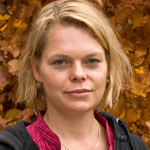The project investigates what forest futures can be built, by whom and how, at the forest frontiers in the Peruvian Amazon, and what the role of forest conservation policies are in this.
Background
A key global environmental challenge reflected in policy and programmes for climate change mitigation is how to maintain and increase forest cover and enhance global carbon sequestration. But evidence on global rates of deforestation and critical research suggests these goals will not easily be achieved as primary forest continues to be lost. The regrown forest area after a the harvesting of a primary forest, is called secondary forest. Today the secondary forest regrowth accounts for 70% of tropical forest areas, and will have to provide a significant part of future forest based environmental services, e.g. climate regulation, water cycle and biodiversity.
Tropical secondary forests are diverse in origin, form and function. Such forests support significant populations of poor people whose customary practices of small scale integrated forest-agriculture land uses give secondary forest a central function in maintaining field productivity. Other secondary forests have been created by greater disturbances with consequences for their form. But in research and policies they are mainly seen as a byproduct of deforestation, and their potential and diversity are neglected. They are often located in rural frontiers, where government presence, authority and legitimacy is limited and there is contention over what these forests are, who is to use them and how they should be used.
The project
Taking the Peruvian Amazon as a case this research will build understanding of secondary forest landscapes. This knowledge will be used to explore forested landscape futures given market pressures, emerging conservation agendas and limited control by the state. It will analyse and reflect on development and environmental changes in an integrated manner. This new knowledge of human-environmental relations is needed to secure and improve smallholders’ wellbeing and forest futures for the global good.
Method
The interdisciplinary research team will work in four contrasting landscapes and use a ‘patches-approach’, combining participatory landscape assessment with forest ecology to build understanding of forest heterogeneity. This method will be combined with interviews, collaborative methods and policy analysis. The project will contribute to the socio-political understanding of secondary forest in smallholder landscapes and the dynamics of forest transition.

